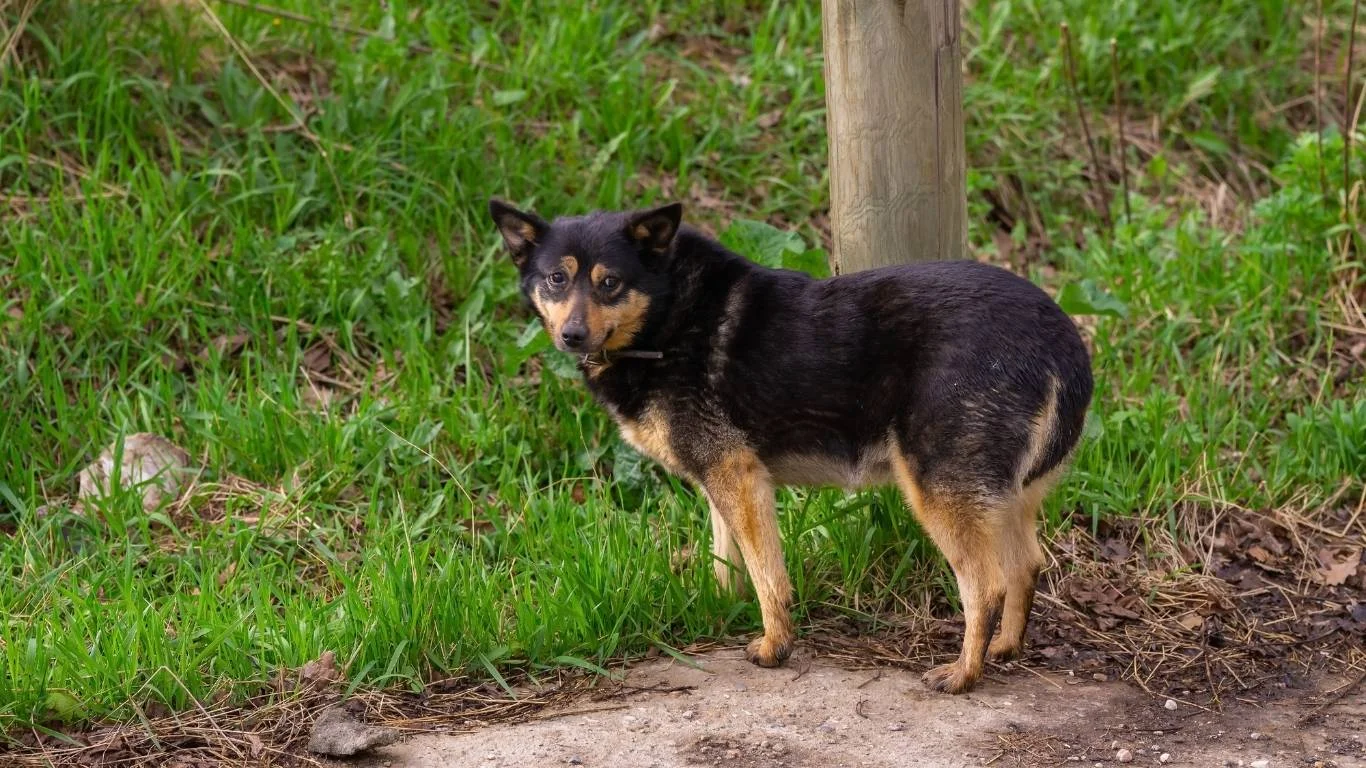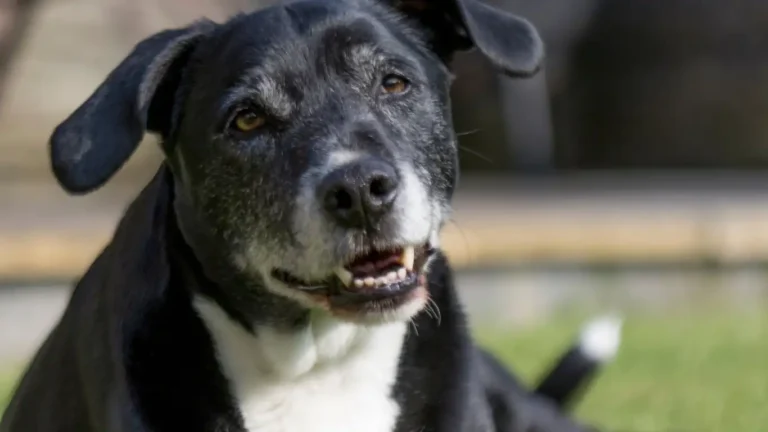How to Tell if Your Dog Has a Thyroid Problem: Signs to Watch For
As a Veterinary Assistant with a focus on nutrition, I’ve seen firsthand how important it is to catch a thyroid problem in dogs early. The thyroid plays a key role in regulating your dog’s metabolism, energy levels, and overall well-being. But how can you tell if your dog has a thyroid problem? Well, it’s not always as obvious as you might think. It often starts with subtle changes in behavior and health that can easily be mistaken for other issues. But don’t worry—today, I’ll walk you through the common signs and how you can spot the early warning signs of thyroid problems in dogs.
What is a Thyroid Problem in Dogs?
Before diving into how to tell if your dog has a thyroid problem, let’s take a quick look at what thyroid issues actually mean for your furry friend. Dogs typically suffer from two types of thyroid disorders: hypothyroidism and hyperthyroidism.
Hypothyroidism is by far the most common thyroid issue in dogs. It occurs when the thyroid gland doesn’t produce enough thyroid hormone, which can lead to a number of problems like weight gain, sluggishness, and even skin issues. This type of thyroid problem is most common in middle-aged to older dogs, and it’s particularly prevalent in certain breeds like Golden Retrievers, Doberman Pinschers, and Cocker Spaniels.
Hyperthyroidism, on the other hand, is less common and occurs when the thyroid produces too much of the thyroid hormone. This can lead to symptoms like weight loss, increased heart rate, and sometimes, behavioral changes. Hyperthyroidism is often caused by a tumor on the thyroid gland, which is why it’s more commonly seen in older dogs.
Common Signs Your Dog Might Have a Thyroid Problem

1. Sudden Weight Gain or Loss
Weight fluctuations are one of the most obvious signs of a thyroid problem in dogs. If your dog suddenly gains weight despite no change in diet or exercise routine, hypothyroidism might be to blame. On the flip side, if your dog is losing weight without trying, it could be a sign of hyperthyroidism. Both conditions mess with your dog’s metabolism, leading to these changes.
2. Changes in Coat and Skin Health
Thyroid problems can cause major changes in your dog’s skin and coat. If your dog is suffering from hypothyroidism, you might notice thinning fur, dry, flaky skin, or even hair loss. The coat may look dull and lifeless. Hyperthyroidism can also lead to skin issues, though it’s typically less noticeable than in hypothyroidism.
3. Lethargy and Low Energy Levels
Has your dog been less active lately? Is your usually energetic pup now content to lay around all day? Hypothyroidism often leads to lethargy. Dogs with this condition tend to slow down, and it might seem like they’re just getting older or lazier. But if your dog’s energy levels seem to have dropped drastically, it could be a sign of an underlying thyroid problem.
Behavioral Changes You Shouldn’t Ignore

4. Unexplained Irritability or Aggression
If your dog is normally calm and friendly but suddenly becomes irritable or aggressive, it could be related to a thyroid imbalance. Hypothyroidism, in particular, can cause mood swings or even anxiety, which might result in changes in behavior. While there are many reasons why a dog might act out, don’t dismiss these behavioral changes without considering a thyroid issue.
5. Increased Thirst or Urination
Another sign that something might be off with your dog’s thyroid is an increase in thirst or urination. This can happen with both hypothyroidism and hyperthyroidism, though it’s more common in the latter. If you’re noticing that your dog is drinking more water than usual or needing to go outside more frequently, it’s a good idea to have them checked out by a vet.
6. Difficulty with Temperature Regulation
Does your dog seem extra cold all the time, or maybe they’re too warm even in cooler weather? Dogs with thyroid problems can struggle to regulate their body temperature. Hypothyroidism can lead to a dog feeling cold all the time, while hyperthyroidism might make them feel excessively warm, even in mild conditions.
What to Do if You Suspect a Thyroid Problem

If you notice any of these symptoms in your dog, it’s important to take action. Start by scheduling a visit to your veterinarian. A blood test will often be needed to diagnose thyroid problems, as it measures the levels of thyroid hormones in your dog’s bloodstream. Your vet may also perform additional tests or look at your dog’s medical history to make a more accurate diagnosis.
In some cases, thyroid problems in dogs can be managed with medication. For example, hypothyroidism is commonly treated with synthetic thyroid hormone replacement. Your vet will guide you on how to administer the medication and adjust it as needed based on follow-up tests. If your dog has hyperthyroidism, treatment options might include medication, surgery, or radioactive iodine therapy, depending on the underlying cause.
How Thyroid Problems Affect Your Dog’s Health

As we talked about earlier, thyroid problems can affect several aspects of your dog’s health. But let’s dive a little deeper into how these issues impact your dog’s body and quality of life. After all, the thyroid isn’t just a minor gland—it’s responsible for regulating key functions like metabolism, heart rate, and even your dog’s mood.
Metabolism and Weight Gain
If your dog has hypothyroidism, their metabolism will slow down. This can lead to weight gain, even if you’re not changing their food intake or exercise routine. I’ve seen many pet owners worry when their dog starts putting on a few extra pounds. At first, it can feel like they’re just getting older or maybe even a bit lazy. However, when it’s caused by thyroid problems, the weight gain often happens gradually and with no clear reason. This slow metabolism can also affect your dog’s ability to process food properly, leading to a buildup of fat.
On the flip side, hyperthyroidism speeds up the metabolism, causing weight loss even if your dog’s appetite remains normal. This can be particularly worrying if your dog is suddenly dropping weight without any dietary changes. I’ve had several cases where owners were concerned about their dog’s shrinking size and couldn’t figure out what was wrong until thyroid testing revealed the issue. That’s why it’s so important to keep an eye on your dog’s weight and consult a vet if the changes seem unusual.
Impact on Energy Levels
We all know how much dogs love to play, run, and explore. But thyroid problems can significantly dampen those natural instincts. With hypothyroidism, dogs often become lethargic and lack energy. It’s not just that they want to nap all day—it’s that they genuinely seem exhausted after minimal activity. I’ve seen dogs that used to enjoy walks and playing fetch suddenly turn their noses up at those activities, only to find out they have an underactive thyroid. It’s almost like they’re living in a constant state of low energy.
Hyperthyroidism can have the opposite effect, leading to restlessness and hyperactivity. These dogs may seem more agitated, constantly pacing or panting. If you notice your dog becoming unusually jittery or unable to calm down, it could be worth investigating a thyroid issue as a possible cause.
Diagnosing Thyroid Issues in Dogs

If you’re noticing any of the signs we’ve discussed so far—like weight changes, lethargy, or skin issues—your next step should be to visit your vet for proper diagnosis. But what exactly will the vet do to figure out if your dog has a thyroid problem?
The Importance of Blood Tests
One of the first things your vet will likely recommend is a blood test. Blood tests are the most effective way to measure the levels of thyroid hormones (T4 and T3) in your dog’s system. These hormones are produced by the thyroid gland and are directly related to metabolic function. If the levels are abnormal, it’s a clear sign that your dog’s thyroid isn’t functioning properly.
What’s really important to note here is that while blood tests are great for diagnosing thyroid problems, they can sometimes give false readings—especially if the thyroid imbalance is early-stage or if your dog is on medication. That’s why it’s always good to work closely with your vet to evaluate the full picture of your dog’s health. Sometimes additional testing, like a thyroid stimulating hormone (TSH) test, might be needed to confirm the diagnosis.
Physical Exam and History Review
In addition to lab tests, your vet will perform a physical exam to check for signs of thyroid issues. They’ll assess your dog’s weight, coat quality, and overall condition. They might also ask about your dog’s behavior and any changes you’ve noticed, such as increased thirst or changes in appetite. A thorough review of your dog’s medical history is crucial, as certain breeds are more predisposed to thyroid issues than others.
Ultrasound or Fine Needle Aspiration (FNA)
If your dog’s thyroid levels are abnormal and the vet suspects a tumor (especially in cases of hyperthyroidism), they might recommend an ultrasound or fine needle aspiration (FNA) of the thyroid. These tests allow your vet to get a closer look at the thyroid gland and check for growths that could be causing the thyroid imbalance. In some cases, if a tumor is identified, it may need to be surgically removed, or other treatment options, like radioactive iodine therapy, may be explored.
Treatment Options for Thyroid Problems in Dogs

Once your dog has been diagnosed with a thyroid problem, the next step is to decide on a treatment plan. The good news is that thyroid issues in dogs can often be managed with the right approach. Depending on whether your dog has hypothyroidism or hyperthyroidism, the treatment options will vary.
Treatment for Hypothyroidism
Hypothyroidism is generally managed with synthetic thyroid hormone replacement, which helps restore normal thyroid levels. This is usually given in the form of a pill that your dog takes daily. It’s an effective and relatively easy treatment, and most dogs with hypothyroidism go on to live normal, healthy lives once they’ve been stabilized on the medication. Your vet will likely recommend periodic blood tests to monitor thyroid hormone levels and adjust the dosage if necessary.
Treatment for Hyperthyroidism
On the other hand, hyperthyroidism is more complex to treat, as it’s often caused by a tumor on the thyroid gland. Treatment options may include medication, surgery, or radioactive iodine therapy. Medications like methimazole can help control thyroid hormone production temporarily, but surgery or radioactive iodine is often recommended for long-term solutions. Surgery involves removing the thyroid tumor, while radioactive iodine therapy targets and destroys the abnormal thyroid tissue, which is a non-invasive and highly effective treatment.
It’s important to note that with hyperthyroidism, early diagnosis and treatment are crucial to prevent complications like heart disease, high blood pressure, and other serious issues. With the right treatment plan, however, many dogs recover fully and return to their normal, happy selves.
Living with a Dog Diagnosed with Thyroid Issues

Once your dog has been diagnosed with a thyroid issue, life doesn’t have to change drastically. With the right treatment and some adjustments, your dog can continue to live a full and happy life. However, it’s important to stay vigilant, follow your vet’s advice, and monitor your dog’s condition closely. Let’s talk about what you can expect and how to manage life with a dog who has thyroid problems.
Managing Medication and Routine Care
For dogs with hypothyroidism, the treatment usually involves daily medication in the form of synthetic thyroid hormones. It’s fairly straightforward, but consistency is key. I’ve had many clients come in worried about the long-term nature of the treatment, but most dogs respond really well to it. Once you’ve got a medication routine in place, you’ll just need to keep track of when to give the pills and make sure they’re being taken regularly. Missing doses here and there can lead to your dog not getting the full benefit of the medication.
For dogs with hyperthyroidism, managing their treatment may be a little more involved, especially if they’re undergoing radioactive iodine therapy or if you’re monitoring them for side effects of their medication. Hyperthyroidism treatments are more complex, but the important thing is that your vet will work with you every step of the way to ensure the treatment plan is effective. Frequent checkups and follow-up blood tests are a big part of the process, so be prepared for some extra trips to the vet.
Diet and Nutrition Tips for Dogs with Thyroid Issues

As a Veterinary Assistant with a focus on nutrition, I can’t stress enough how important diet is for dogs with thyroid issues. Their nutritional needs can change once they start treatment, and it’s essential to work with your vet or a pet nutritionist to provide the best support for your dog’s condition. Here are some tips that I’ve shared with pet owners over the years:
1. Low-Fat Diet for Hypothyroid Dogs
If your dog has hypothyroidism, their metabolism is slower, which means they may be more prone to weight gain. You can help manage their weight by feeding them a low-fat, high-protein diet that supports their metabolism. Lean meats like chicken and turkey, as well as foods that are high in fiber, can help keep them feeling full while managing their weight. There are also specialized dog foods designed for thyroid health, which are worth discussing with your vet.
2. Avoiding Soy and Certain Fillers
It’s been suggested that soy-based ingredients in pet food can interfere with thyroid hormone production, so it might be a good idea to look for food options that are free from soy or other problematic fillers. Not all dogs will be sensitive to soy, but it’s a good idea to ask your vet about this, especially if you’re switching your dog’s food after a thyroid diagnosis.
3. Consider Supplements
Sometimes, your vet may recommend supplements to support your dog’s thyroid health. These might include omega-3 fatty acids for skin and coat health, or specific vitamins and minerals to help with metabolism. However, always check with your vet before introducing any new supplements to your dog’s diet. Over-supplementing can do more harm than good, and you want to be sure that whatever you’re adding is truly beneficial for your dog’s specific condition.
4. Hyperthyroid Dogs: Increased Protein and Caloric Needs
For dogs with hyperthyroidism, the increased metabolism means they might burn calories much faster than usual. These dogs can sometimes appear underweight even if they have a good appetite. In such cases, you might need to feed them a higher-calorie diet to keep up with their energy needs. Again, be sure to consult your vet about the best food options to maintain a healthy weight for these dogs. A diet rich in protein and healthy fats can help maintain muscle mass and energy levels while managing their thyroid condition.
When to Seek Emergency Care
While most thyroid issues in dogs are manageable with medication and routine care, there are situations where your dog might need emergency treatment. As someone who’s worked in a veterinary clinic, I’ve seen firsthand how critical it is to act fast in certain situations. Here are some red flags to watch for:
1. Unexplained Severe Weight Loss
If your dog is losing weight rapidly, especially in the case of hyperthyroidism, this could signal a more severe issue. Along with weight loss, if your dog is vomiting, acting lethargic, or showing signs of weakness, get them to the vet immediately. These could be signs of dehydration or other complications related to thyroid imbalance.
2. Difficulty Breathing or Rapid Heart Rate
Hyperthyroidism can lead to heart issues, such as tachycardia (rapid heart rate). If your dog suddenly seems to be struggling to breathe, has a racing heart, or collapses, this could be a medical emergency. If you notice these symptoms, get your dog to a veterinary clinic right away. They may need immediate intervention.
3. Skin and Coat Deterioration
If your dog has hypothyroidism and you notice rapid hair loss, severe dandruff, or your dog’s skin looks unhealthy despite proper care, this could be a sign that their thyroid medication isn’t working properly, or their condition has worsened. While these symptoms aren’t usually life-threatening, it’s a good idea to reach out to your vet if they seem extreme or unmanageable.
References and Further Reading
If you’re interested in learning more about thyroid problems in dogs, here are some trusted sources for further reading:
- PetMD – Thyroid Disorders in Dogs
- American Kennel Club – Hypothyroidism in Dogs
- National Institutes of Health – Thyroid Health
- Health.com – Thyroid Disorders: What You Need to Know
Disclaimer
While this article provides helpful insights into recognizing and managing thyroid problems in dogs, it’s important to remember that every dog is unique. The information here should not replace advice from your veterinarian. Always consult a veterinary professional for an accurate diagnosis and treatment plan tailored to your dog’s specific needs. Thyroid problems can be serious, so don’t hesitate to reach out to your vet if you notice any signs of a thyroid issue in your dog.






